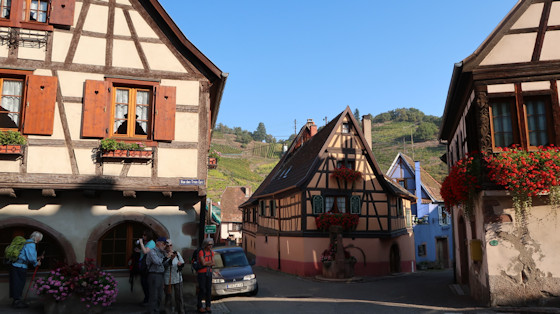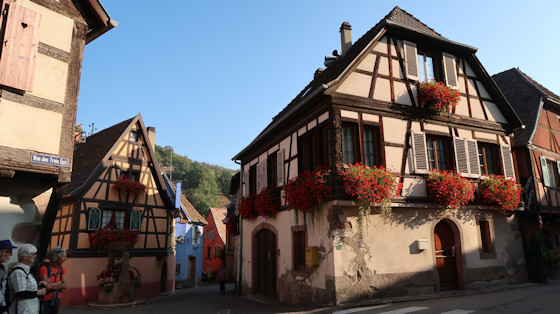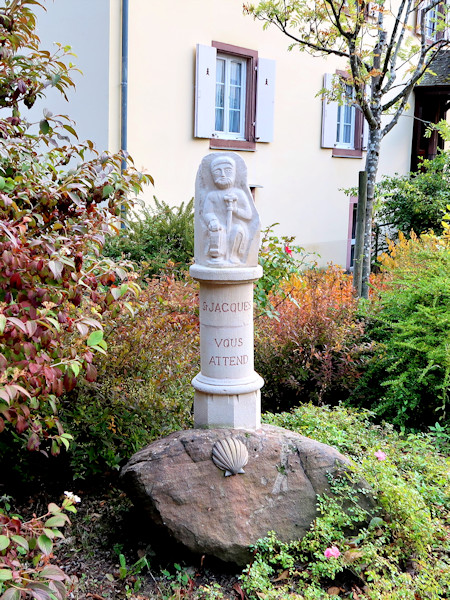
From Kaysersberg, the Way of St. James leads through vineyards to the village of Katzenthal, about 5 km away.
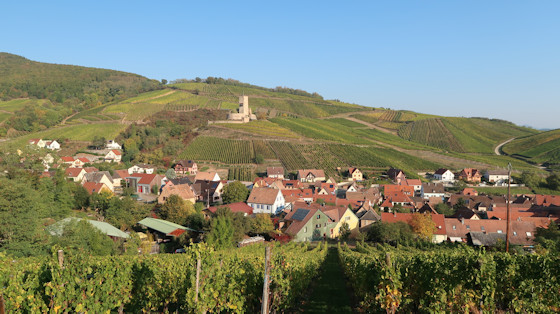
The path leads uphill through the village to the next vineyard. Soon you have a beautiful view of the Wineck castle ruins and the Katzenthal below.

Bright sunshine and pleasant temperatures make for ideal hiking weather for us. Here we are on the way to Niedermorschwihr.
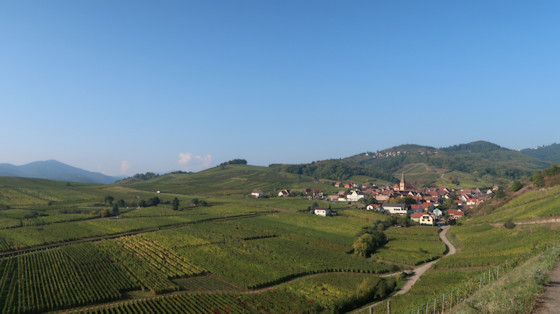
Soon Niedermorschwihr is in front of us.
We walk through the village
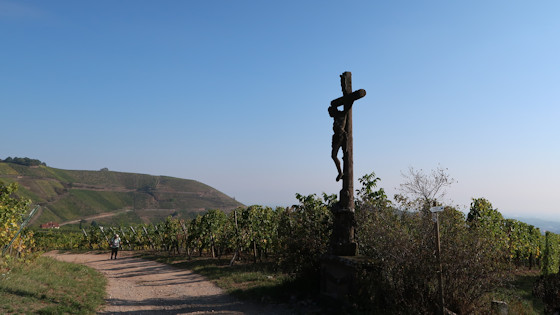
A cross along the way invites to reflection.

We are approaching Turckheim.
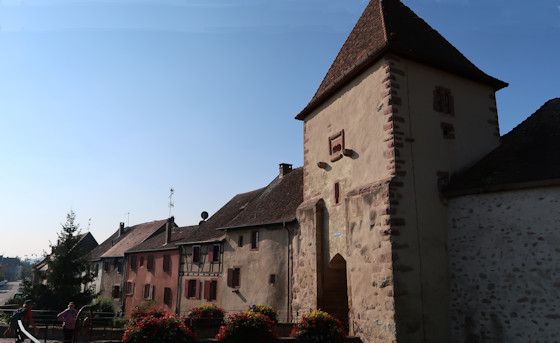
When Germanic tribes invaded the Roman Empire via the Rhine, the Thuringian tribe settled here, which probably helped the place to get its name Thuringheim. Turckheim became a free imperial city in 1312. In 1315, construction began on the gate towers and fortifications, which are still in excellent condition today. In 1354, Turckheim was granted market rights and joined the Alsatian League of Ten Towns. In 1675, the imperial army was defeated by the French army under Marshal Turenne at the gates of Turckheim. The town was sacked and plundered. The town was plundered. In the Peace of Nijmegen in 1678, the affiliation to France was sealed.

The medieval market square with St. Anne's Church in the background.

Of the (demolished) 12th century Romanesque church next to the town hall, only the Romanesque / Gothic tower remains. To the left of the choir arch hangs a painting inside St. Anne's Church showing St. James (his martyrdom can be seen at the bottom left). The Silbermann organ is from 1791.
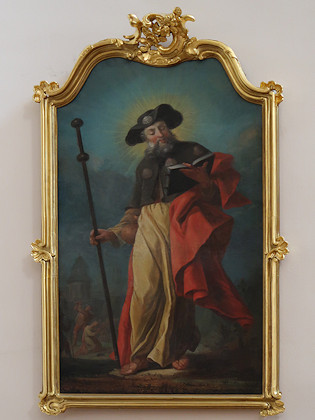

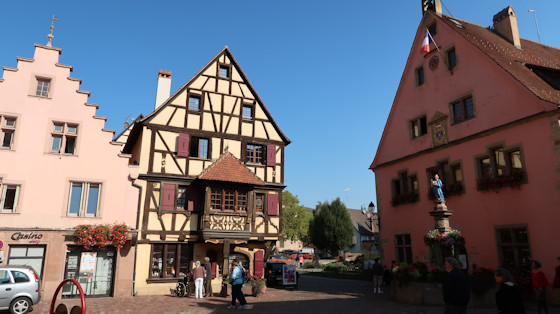
Also worth a visit: the Corps de Garde, in front of which is a fountain with a statue of the Virgin Mary, the Hôtel des deux-clefs with its bay window and bull's-eye windows, and the town fountain.
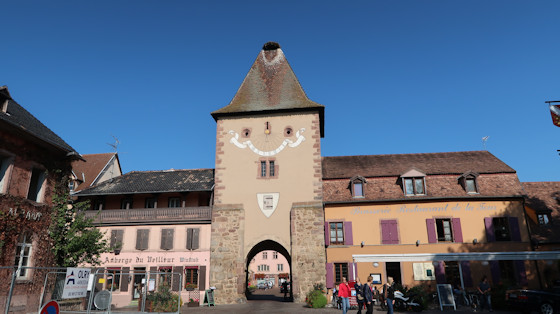
The Way of Saint James leaves Turckheim through this gate.
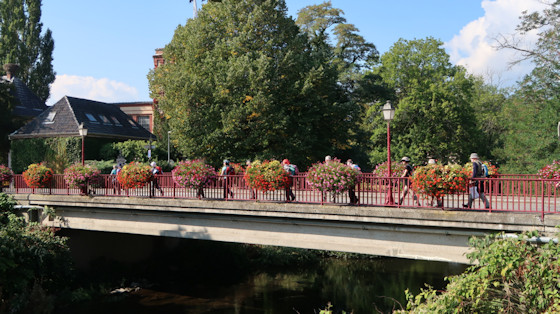
At the exit of Turckheim, we cross the river Fecht.

The path leads through wine-growing areas on the plain ...

... until the road branches off to the left and goes uphill towards Hochlandsbourg.

For the most part, the trail leads uphill through the forest.
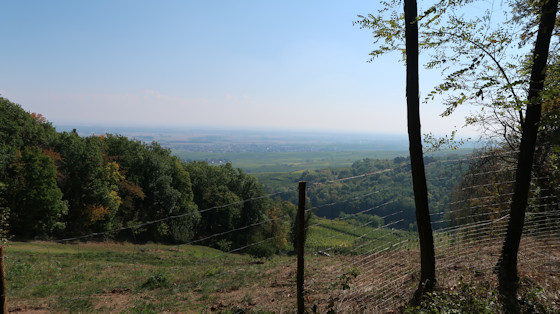
Finally there is a view of the Rhine plain.
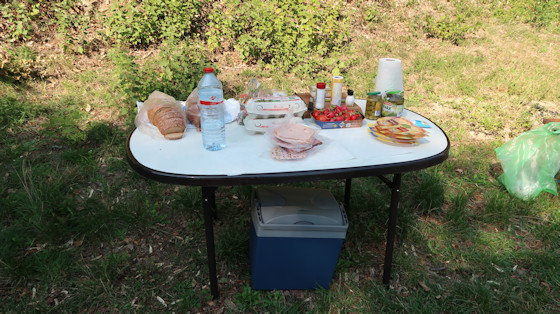
At a somewhat late lunch time, our picnic took place in the middle of the forest, near Hagueneck Castle.
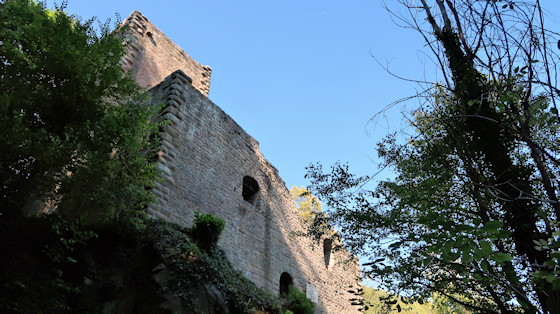
Hagueneck Castle dates from the 13th century and, together with the village of Wettolsheim, belonged to Burkhard von Hagueneck, vassal of the Bishop of Strasbourg. The castle was extended in the 14th century. After several destructions, the Order of St John took over the castle in 1674. It never played a military role because of its remote location. During the French Revolution it was sold as state property. From the tower you have a beautiful view of the Rhine plain.

Here we go to the Monastery of Saint Mark and also to Santiago de Compostela.
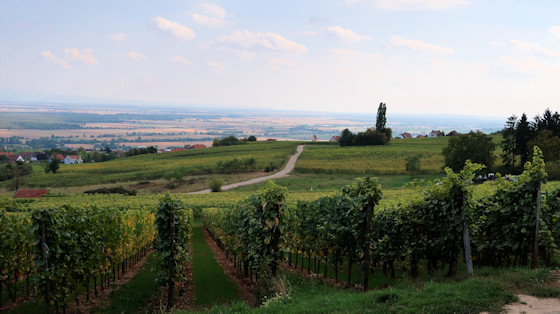
At the former Augustinian canons' monastery of Marbach (founded in 1089 by Mangold von Lautenbach and Burkhard von Gueberschwihr), there is a last view of the plain before the path dips into the forest. Almost nothing remains of the monastery itself.
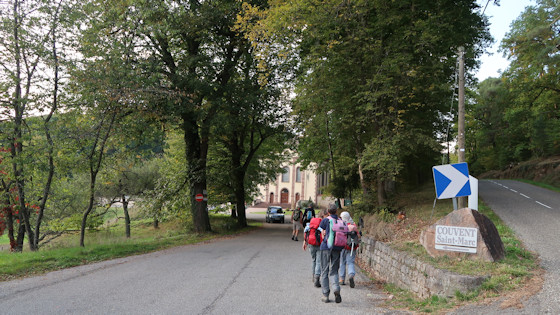
After a little over 1.5 hours in the forest, we reach the monastery of Saint Mark.

St Mark's Monastery is one of the oldest monastery foundations in Alsace. Allegedly founded in 676 by the Merovingian king Dagobert II under the name Sigismundzell, the monastery was settled by Benedictine monks. Destroyed by invading Hungarians in the 10th century, it was rebuilt in the 11th century. In 1051, Pope Leo IX, who came from Alsace, consecrated the church to St. Mark. After the Peasants' Wars, the monastery fell into disrepair and was rebuilt by Ebersmünster Abbey in 1760-62. During the French Revolution it was finally sold as state property. In 1845, the order of the charitable Sisters of St. Joseph was founded here, whose mother monastery it still is today.

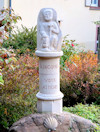

A look inside the sober church of the monastery.



